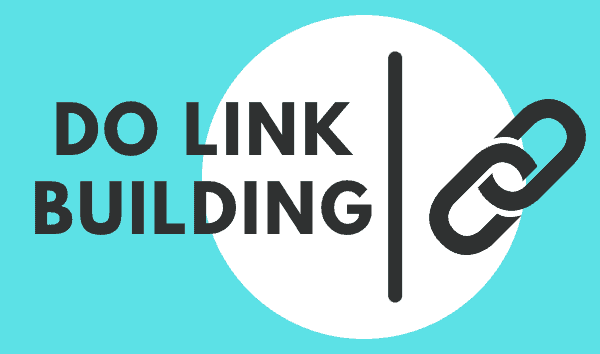
Starting a blog is easier than ever, but getting noticed is a different story.
Over 6 million blog posts are getting published on the web every day, so it will take serious dedication and hard work.
But don’t worry, we’ve researched for you, and we found 12 best practices that will skyrocket the success of your blog and give you a competitive edge.
Table of Contents
- 1 Narrow Your Niche Focus
- 2 Follow Good SEO Practices
- 3 Do Original Research
- 4 Do Link Building
- 5 Do Content Collaborations
- 6 Being Active on Social Media
- 7 Have a YouTube Channel
- 8 Build a Newsletter
- 9 Free Tools and Resources to Help Get Your Blog Noticed
- 10 FAQs about How to Get Your Blog Noticed
- 11 Conclusion
Narrow Your Niche Focus

One way to improve your blog is to focus on a narrower niche.
By zeroing in on a specific topic, you can become a go-to resource for that particular subject, and when people are searching for information on that topic, your site is more likely to come up in the results because of your increased topical authority.
So how exactly do you do it?
Here are 5 quick steps:
1. Start by asking yourself a few questions: Who are your ideal customers? What do they need from you? How can you make their lives better or easier?
2. Figure out what topics and interests would appeal to your target audience. This could be anything from travel, fashion, health & wellness, photography, etc.
3. Look into trending topics in your niche and see if there’s an untapped market there that you can capitalize on. Make sure the content is fresh and relevant to keep readers engaged.
4. Brainstorm keywords related to your chosen topic/s so that these potential clients can find you easily through search engine optimization (SEO).
5. Do some market research to ensure you’re not missing out on other aspects of your niche that could be beneficial to your business. That way, you can stay ahead of the competition and offer something unique.
To learn more about narrowing down your niche, check out David Risley’s tutorial from Blog Marketing Academy.
Follow Good SEO Practices

Effective SEO is the foundation of your blog’s visibility on the web.
71% of bloggers state that SEO is the most significant source of traffic.
So if you want to be found, here are some tips you can implement:
1. Do Proper Keyword Research
According to a study, high-income blogs ($50,000 a year) conduct keyword research 4.3 more than the average blog which leads to their success.
So keyword research is consequential.
There are several tools out there that can help with this, like Google’s Keyword Planner.
Once you’ve identified some relevant high-volume yet low-competition keywords, make sure to use them throughout your site, including in the title, headings, and body of your content.
2. Maintain Clean URLs
Having clean and organized URLs is essential for the success of any website.
Not only do they look more aesthetically pleasing, but they can also give your SEO a major boost.
By keeping URLs simple and concise, search engine crawlers will be able to easily identify the content on each page and index them accordingly.
This will help increase the visibility of your website in search engine results pages (SERPs), which could eventually lead to higher rankings.
Additionally, having clean URLs makes it easier for users to navigate around your site since there won’t be any unnecessary characters or symbols that could confuse them.
Clean URLs ensure that visitors find what they’re looking for as quickly as possible, making their experience much smoother and enjoyable overall.
So don’t forget to keep your URLs neat and tidy to ensure that they are as optimized as possible for SEO.
For example, a URL like “www.example.com/blog/keyword-of-article” is much cleaner than “www.example.comblog?p=123.”.
3. Organize Your Headers Well
Headers are like the signposts of your digital content—they tell readers what to expect before they dive in.
That’s why organizing headers is so important. Think about it like this: if you can’t organize your headers, then how can you expect your users to organize their thoughts?
Here are a few tips for getting organized with your headers:
1. Figure out where each header should go – make sure it fits into the flow of your writing.
2. Use short, descriptive words that clearly describe what will follow within the section or page.
3. Make sure all of the header levels are consistent (and logical!) throughout the page – this helps keep everything looking neat and tidy.
4. Try to avoid having two headers next to each other with the same level of importance (e.g. don’t have two H2s right next to each other).
5. Keep headers scannable – use shorter sentences and bigger font sizes if possible!
Organizing your headers is one of the simplest ways to make sure your content looks neat and professional, as well as make it easier for readers to find what they’re looking for quickly and easily.
So take some time out of your day today and make sure those signposts are pointing in the right direction!
4. Use Keywords Within Your Content
In addition to using keywords in your URL and headers, it’s also important to use them throughout the body of your content.
Here are 5 free tools you can use:
1. Google Keyword Planner: Google’s free keyword research tool is great for anyone looking to get an idea of the search volume for a certain keyword or phrase. The tool also provides valuable insights into competition levels and estimated cost per click, so you can determine if your budget will accommodate the chosen terms.
2. Ubersuggest: Ubersuggest is one of the most popular free keyword tools available today, providing extensive results including related keywords, long-tail phrases and more. It pulls data from multiple sources such as Google Search Console, YouTube and Amazon to give users a better understanding of what people are searching for online.
3. Keyword Tool: This tool helps you find relevant keywords by automatically generating hundreds of keyword ideas from real user queries. You can also filter through the results to find the most relevant keywords for your site, making it easier to narrow down a list of potential terms.
4. AnswerThePublic: This free tool is ideal for those looking for long-tail keyword phrases. It visualizes questions and searches terms related to your topic by leveraging Google Autocomplete data, giving you insight into what people are searching for on the web.
5. Semrush Keyword Magic: Semrush’s Keyword Magic tool provides users with hundreds of keyword suggestions based on their input query, as well as sophisticated filtering options that let you easily fine-tune your results. The tool also includes metrics such as search volume and keyword difficulty to help you determine the best terms for your website.
But beware of keyword stuffing, which is when you include too many keywords in your content in an attempt to game the system.
This will not only turn off readers, but it will also get you penalized by search engines.
As a rule of thumb, try to keep your keywords to around 5% of the total word count.
5. Write Unique and Comprehensive Content
If you’re a blogger, you know that writing content that stands out is key.
After all, if your blog doesn’t stand out from the millions of others on the internet, then what’s the point?
You want to make sure it’s unique and comprehensive so readers can get the most out of it.
Here are a few content ideas to start with:
1. Tutorials: Tutorials are a great way for bloggers to provide valuable information to their readers in an easy-to-read format. Tutorials can cover topics such as how to construct a resume or how to get started with social media marketing.
2. Reviews: People love hearing what others think of products and services they may be considering purchasing. Providing honest reviews can help your readers make more informed decisions, which helps build trust from them.
3. Tips & Tricks: If you’re a professional in the field, then sharing tips and tricks about your topic is sure to be appreciated by readers. These posts are great for providing simple yet effective advice that people can use in their everyday lives.
4. Lists: People love lists! They provide an easy-to-read format without having to read through a lot of text. Whether you’re creating a list of the top 10 movies of the year or the best places to eat in your city, your readers will appreciate the helpful content.
5. Interviews: Doing interviews with industry experts can be a great way to add value to your blog. Ask questions that are relevant to your topic, and get opinions and advice from people who have done it before.
Moreover, developments in technology over recent years have democratized high-end content creation.
For example, Copywritely can help you write original content by checking for plagiarism issues and giving useful suggestions on how to make your text more unique.
Grammarly can help ensure that all your sentences are grammatically correct so that no mistakes creep in. Grammarly is a free tool and there’s a 7-day free trial for Grammarly Premium.
Hemingway Editor is also a fantastic tool, as it highlights any passages that may be too complex or long-winded, providing you with tips on how to make them more concise and easier to understand.
Jasper can help you make sure that your content is comprehensive by providing detailed research and insights into your topic. This can be an invaluable resource for ensuring that your blog posts are well-rounded and informative.
Content at Scale tries to automate the entire process or you by supplying a keyword and getting back roughly 2,000-word blog post that are well outlined and unique.
There are tons of tools that we can’t cover here but this AI writing tools listicle does a great job digging deeper.
Do Original Research

By definition, original research is defined as “a process of investigating a topic to discover new information. ”
In other words, it’s when you go out and gather data and information that hasn’t been published or talked about before.
Why is this important?
Because when you share your findings and insights on a topic, it shows that you’re an authority on the subject.
This can attract new readers and followers who are interested in what you have to say. Doing original research can be a bit daunting, especially if you’re not used to it.
But there are a few simple ways to get started.
One way is to start small by conducting interviews with people who are experts in your field.
Another way is to look for data that hasn’t been published before, such as surveys or polls.
Once you have your data, the next step is to analyze it and draw conclusions from it.
This is where your original insights and ideas come in.
By sharing your findings and thoughts on a topic, you’ll be able to attract new readers and followers who are interested in what you have to say.
Do Link Building

Link building is the process of acquiring links from other websites to your own.
This is important because links are one of the main ranking factors for search engines like Google.
The more links you have pointing to your site, the higher your site will rank in the search results.
There are some ways to build links but they usually share a similar methodology that involves strategizing, outreach, and content.
Link Building Strategy
Link building strategies can vary greatly depending on the goals of the website and the industry it operates in. Some of the most common link building strategies include:
1. Guest Posting: Inviting writers or influencers to contribute content to your blog in exchange for a link back to their website.
2. Link Insertions: Working with existing content creators to insert links to your blog into their own articles or posts.
3. Link Reclamation: Connecting with people who have already linked to outdated content on your website and asking them to update the link.
4. Competitor Link Building: Analyzing the links pointing to your competitors’ websites and trying to acquire similar links for yourself.
5. Skyscraper Link Building: Creating content that is significantly better than the existing content on a particular topic and reaching out to other websites and asking them to link to it.
Once you’ve decided on a strategy its time to prospect and outreach.
Email Outreach
The success of a link building campaign depends largely on the effectiveness of one’s outreach.
There are several components of outreach that you’ll want to master.
Prospecting: The first step is to create a list of potential websites and influencers to reach out to. Google search or backlink finders.
Filtering: Once you have created a list of prospects, the next step is to filter out the good ones from the bad. Look at factors like domain authority, traffic, content quality, and relevance either manually or using filtering tools.
Finding Emails: Once you have a shortlist of prospects, the next step is to find the emails of people who work at those websites. This can be done using email finders.
Sending Emails: Email is the best way to reach out to people so you can start building relationships with them. You can manually send emails or use tools to automate it.
Do Content Collaborations

One of the best ways to get your blog noticed is to collaborate with other bloggers.
This can help you attract new readers and followers. Here are a few examples of content collaborations:
1. Guest blogging
Reach out to other bloggers in your industry and ask if you can guest post on their blog. This will give you a great opportunity to expand your reach and potentially gain new readers from the other blogger’s audience.
2. Podcast interviews
Growing a podcast to interview experts in your field or other successful bloggers is another great way to collaborate. This gives you and the other person a chance to promote each other’s work while providing valuable content to your readers.
3. Joint webinars
Hosting a webinar with another blogger or expert in your field is a great way to give your readers insight into different perspectives, while also building relationships and promoting each other’s work.
Invite another blogger in your industry to co-author a piece of content with you. This will allow you to collaborate and create something new that both of your audiences can benefit from.
5. Joint promotion campaigns
Take part in joint promotion campaigns with other bloggers in your industry. This is a great way to get more eyes on your blog, as well as collaborate with others in the process.
Being Active on Social Media

Social media is an incredibly powerful tool for getting your blog noticed.
From growing your audience and connecting with communities to boosting search engine rankings and driving traffic, there is a multitude of benefits that come with using social media.
Here is 10 examples of the benefits of using social media:
1. You can reach more people with your content and get it seen by a wider audience.
2. You can create relationships with other bloggers and collaborate on projects that could potentially bring in more readers.
3. You can build your brand and become an authority figure in topics related to your blog, increasing credibility.
4. You can increase traffic to your website by sharing links or promoting content directly from social media sites like Twitter, Facebook, or Instagram.
5. Social media allows you to quickly answer questions from potential followers and establish yourself as an expert in the field of blogging.
6. It’s easy to keep up with current trends on social media channels, allowing you to stay ahead of the competition.
7. You can create an engaged community of followers who are interested in your blog and what you have to say.
8. With the right tactics, it’s possible to quickly grow your blog by using social media channels like Pinterest or Instagram for posting content that is visually appealing and engaging.
9. By joining social media groups related to blogging, you can network with other bloggers and find new opportunities for collaboration, guest posts, and more.
10. Social media gives you a platform to interact directly with potential readers and customers, allowing them to get a better idea of who you are as an individual and as a blogger!
Have a YouTube Channel

In today’s digital age, it’s important to have a presence on as many platforms as possible.
While a blog is a great way to share your thoughts and ideas with the world, a youtube channel can help you reach an even wider audience.
With a youtube channel, you can add another dimension to your blog by sharing videos.
You can use videos to give your viewers a behind-the-scenes look at your life or to provide helpful tutorials related to your blog’s subject matter.
You can also use youtube to build relationships with other bloggers and influencers in your niche.
By creating engaging videos, you can quickly build a following of loyal fans who are interested in what you have to say.
So if you’re looking for ways to take your blog to the next level, consider creating a youtube channel.
It’s a great way to connect with more people and share your unique perspective with the world.
Build a Newsletter

Email newsletters are a great way to stay in touch with your customers and build relationships.
They can help you keep your brand top of mind, share new products and services, drive more sales, and more!
However, for email newsletters to be effective, there are a few tips you should follow:
1. Get permission first—Make sure that your subscribers have opted-in to receive emails from you. Otherwise, you’ll just be sending out unwelcome ads.
2. Personalize it—Add personal touches like including the recipient’s name in the subject line or customizing content based on their interests. This will make them feel special and is much more likely to grab their attention.
3. Keep it concise—Most people are busy and don’t have time to read lengthy emails. Keep your newsletters short, sweet, and to the point.
4. Make it visually appealing—Use visuals like images and videos to make your newsletter more engaging. Studies show that people respond better to visual content than plain text alone.
5. Include a call-to-action (CTA)—Always include a clear call-to-action (CTA) in each email so recipients know what action you want them to take next. This could be anything from visiting your website or downloading.
6. Create lead magnets—Offer freebies and exclusive content that your readers can’t get anywhere else like e-books or giveaways. This will incentivize them to subscribe and stay engaged with your newsletter.
Free Tools and Resources to Help Get Your Blog Noticed

1. Google Search Console
A great free tool to monitor your website’s search performance. It gives you a detailed understanding of how your pages appear in organic search results and helps you optimize for better visibility.
2. Yoast SEO
An easy-to-use WordPress plugin that optimizes your content for SEO purposes and guides you every step of the way to ensure best practices are being followed.
3. Keywords Everywhere
This browser add-on allows you to quickly find keywords relevant to your topic and get valuable insights into the competition, cost per click, and relative search volume of each word or phrase.
4. Buzzsumo
With this tool, you can easily identify the most popular content related to any topic, allowing you to create content that resonates with your audience.
5. Ubersuggest
A great free tool for keyword research and tracking organic search positions on Google. It helps you uncover long-tail keyword ideas and competitor insights so you can stay ahead of the competition.
FAQs about How to Get Your Blog Noticed
How do I attract viewers to my blog?
1. Put yourself out there – the more active you are on social media, the higher your chances of getting noticed by potential readers. Share your blog posts on Facebook, Twitter, Instagram, and other platforms to get people talking about your content.
2. Cultivate relationships – As a blogger, it’s important to build strong relationships with other bloggers to increase your reach and audience base. Join blogging communities, comment on other blogs and help promote each other’s work.
3. Leverage SEO – Take advantage of search engine optimization (SEO) tools like Google Trends and keyword research to optimize titles and topics for better visibility on search engines.
4. Offer incentives – Use incentives such as giveaways and discounts to encourage people to subscribe to your blog or follow you on social media. This will give readers a reason to come back for more content.
5. Create quality content – Above all else, make sure that the content you are producing is worth reading. Your posts should be well-written, informative, and relevant to keep readers interested and coming back for more.
How do I know which content will be successful?
1. The key is experimentation! – Research what content is doing well on other related blogs and try out different topics and formats to see what resonates most with your readers. Keep an eye on analytics to track how many people
Conclusion
One important thing to keep in mind if you want your blog to be noticed is to focus on a specific niche.
By narrowing your focus, you’ll be able to better target your audience and improve your SEO.
So if you’re looking for ways to get more readers, make sure you start by focusing on a particular topic or interest.
There’s no question that SEO is complex and ever-changing.
But, there are plenty of people out there who understand it and can help you make your blog more visible online.
Don’t hesitate to reach out to boost your blog’s visibility now!



